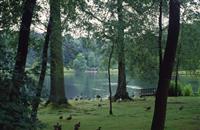
Learn to grow trees in a way that resurrects degraded land
This course covers the fundamentals you require to advance or start your career in this field.
The significance of caring for the environment has been receiving more and more attention in recent times as we come to understand the importance of limited resources and the effects of human activities on the environment. The desertification, erosion and general degradation of once fertile lands is prompting us to investigate why and how these processes have occurred. It has also lead to research into how we can reverse and stop further damage to our environment.
Natural forests are among the most stable and productive ecosystems. We need to plant and conserve forests for their conservation value, to help maintain healthy air, soil and water and for their potential to provide food, forage, fuel, timber and even medicines.
This course is designed for people working or wanting to work with environmental rehabilitation and contaminated sites recovery. It develops an understanding of environmental systems and the rehabilitation of degraded landscapes. You will learn about seed collection, storage and germination, propagation, plant selection, establishment techniques, and controlling pest and disease after planting.